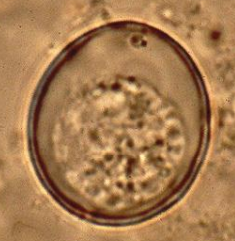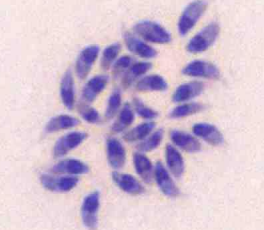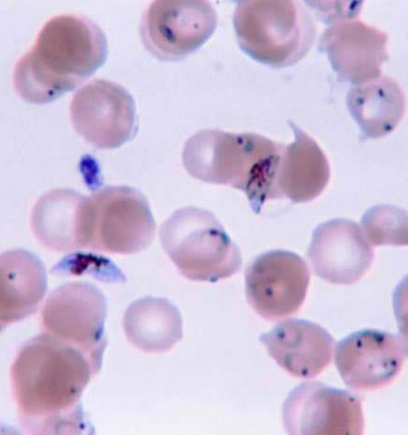APICOMPLEXANS (without the specimens)
1/21
There's no tags or description
Looks like no tags are added yet.
Name | Mastery | Learn | Test | Matching | Spaced |
|---|
No study sessions yet.
22 Terms
Apicomplexans
Parasites of animals, and some cause serious human disease
Apical Complex
complex of organelles specialized for penetrating a host
Apicoplast
nonphotosynthetic plastid
Sexual and asexual stages
Most have ______ that require two or more different host species for completion
Rhoptry
Club shaped secretory organelle
Activated during host cell invasion
Contain numerous enzymes that are released during process of host penetration
Enzymatic action manipulates the immune response of the host allowing the parasite to establish a chronic infection
Microneme
convulated tubular organelles
often associated with, or give rise to rhoptries
also called sarconeme
Adhesive micronemal protein
involved in recognition of host cell receptors
Polar ring
Ring shaped microtubular structure
aids in the release of enzymes/proteins which erode extracellular material and allow parasite to enter host cell
Subpellicular microtubules
Systems of singlet microtubules which extend like lines of longitude from regularly spaced attachment points on the outer polar ring
same function as polar ring
Conoid
Small cone-shaped structure composed of a spiral of filaments
Plays mechanical role in invasion of host cells and is present in only some apicomplexans
Merogony, Gamogony and Sporogony
Reproduction of Apicompexans
Merogony
asexual reproductive process or multiple fission; produces trophozoites
Gamogony
Process of gamete production
Macrogamete and Microgamete
Sporogony
Sexual and Asexual Reproduction
Involves karyogamy that leads to the formation of zygote which is followed by meiosis and multiple fission
Karyogamy
Fusion of the nucleus
Plasmodium falciparum malaria
Plasmodium vivax
Plasmodium malariae
Plasmodium ovale
Four common species that causes malaria
Plasmodium falciparum
The most serious type of species that causes malaria
Life threatening
Cerebral maaria
Plasmodium vivax
Plasmodium malariae
Plasmodium ovale
generally less serious and usually not life-threatening
Plasmodium kowlesi
relatively new species, also a dangerous species that is typically found only in long-tailed and pigtailed macaque monkey

Eimeria tenella

Toxoplasma gondii

Plasmodium falciparum